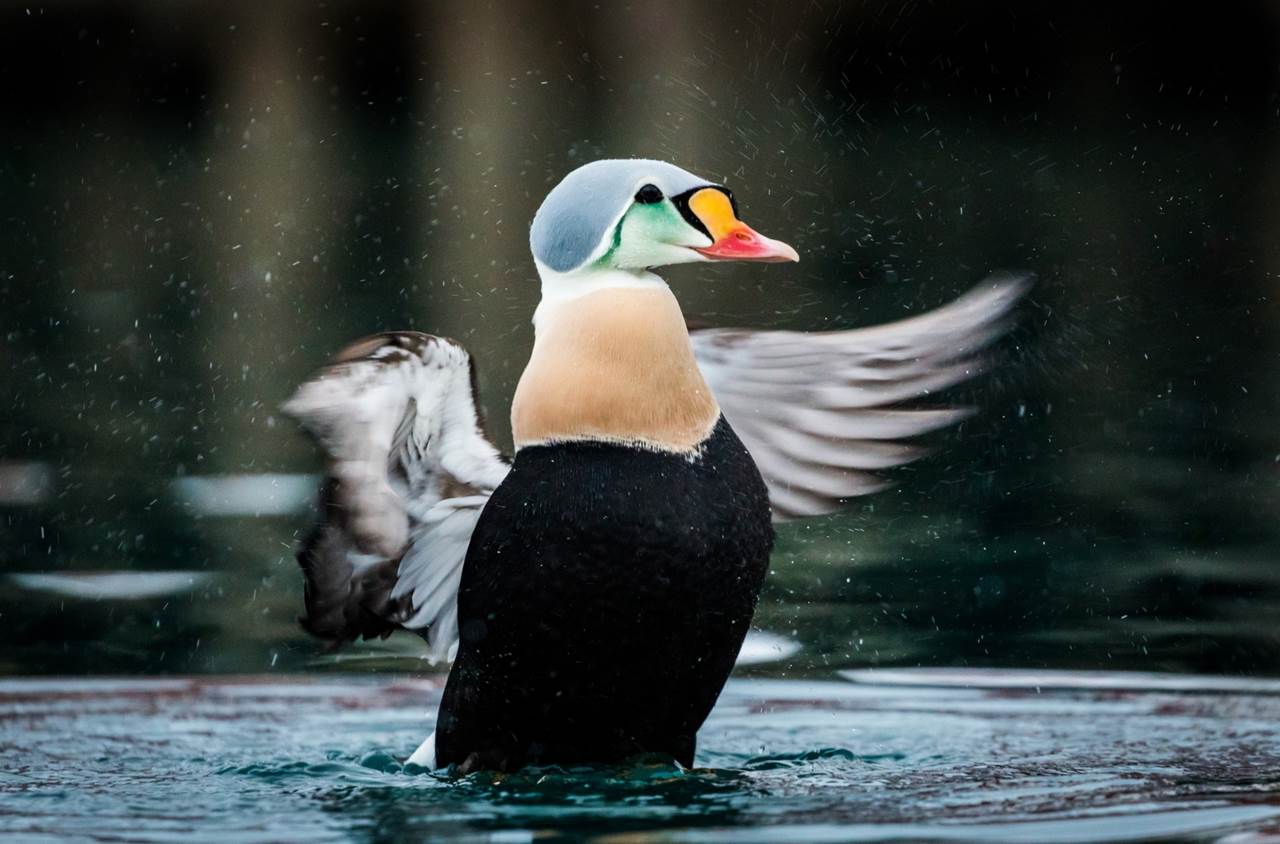

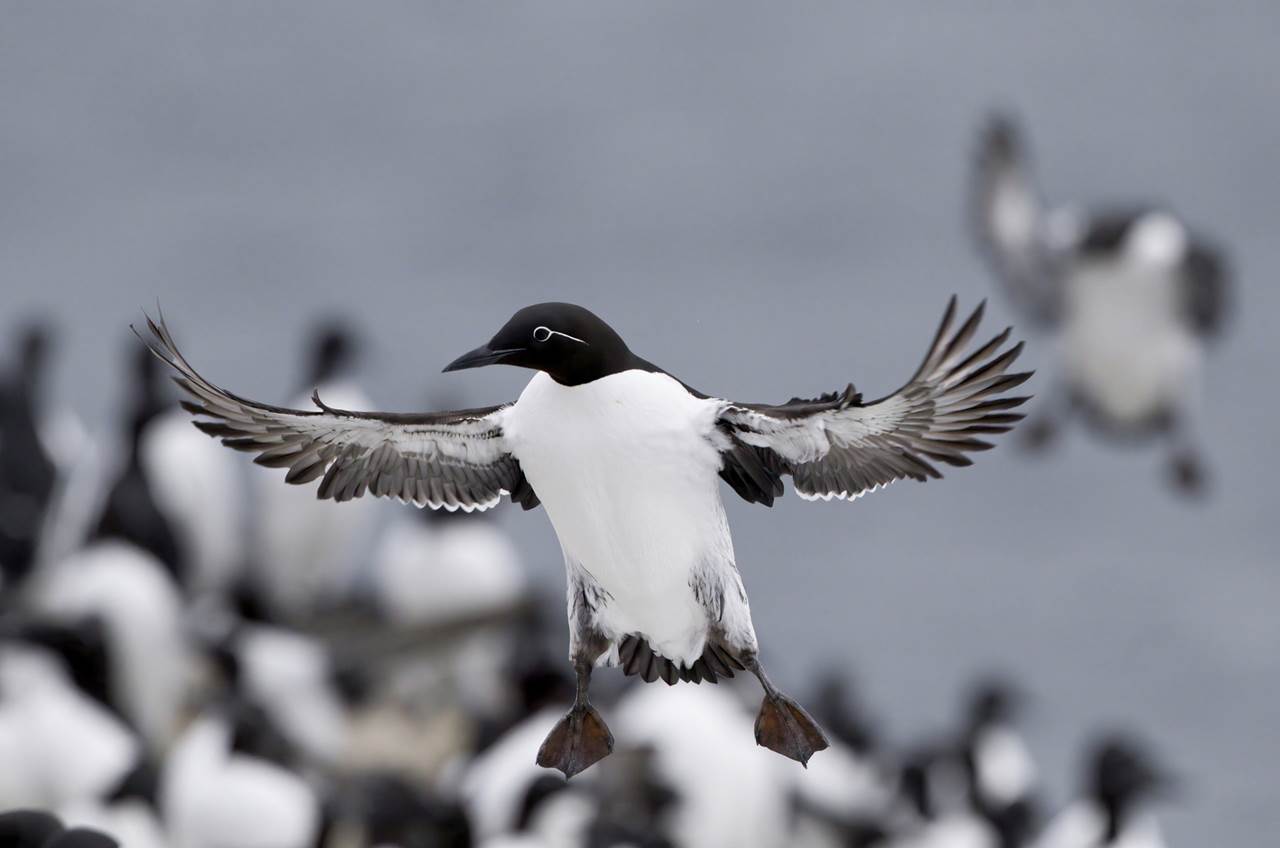
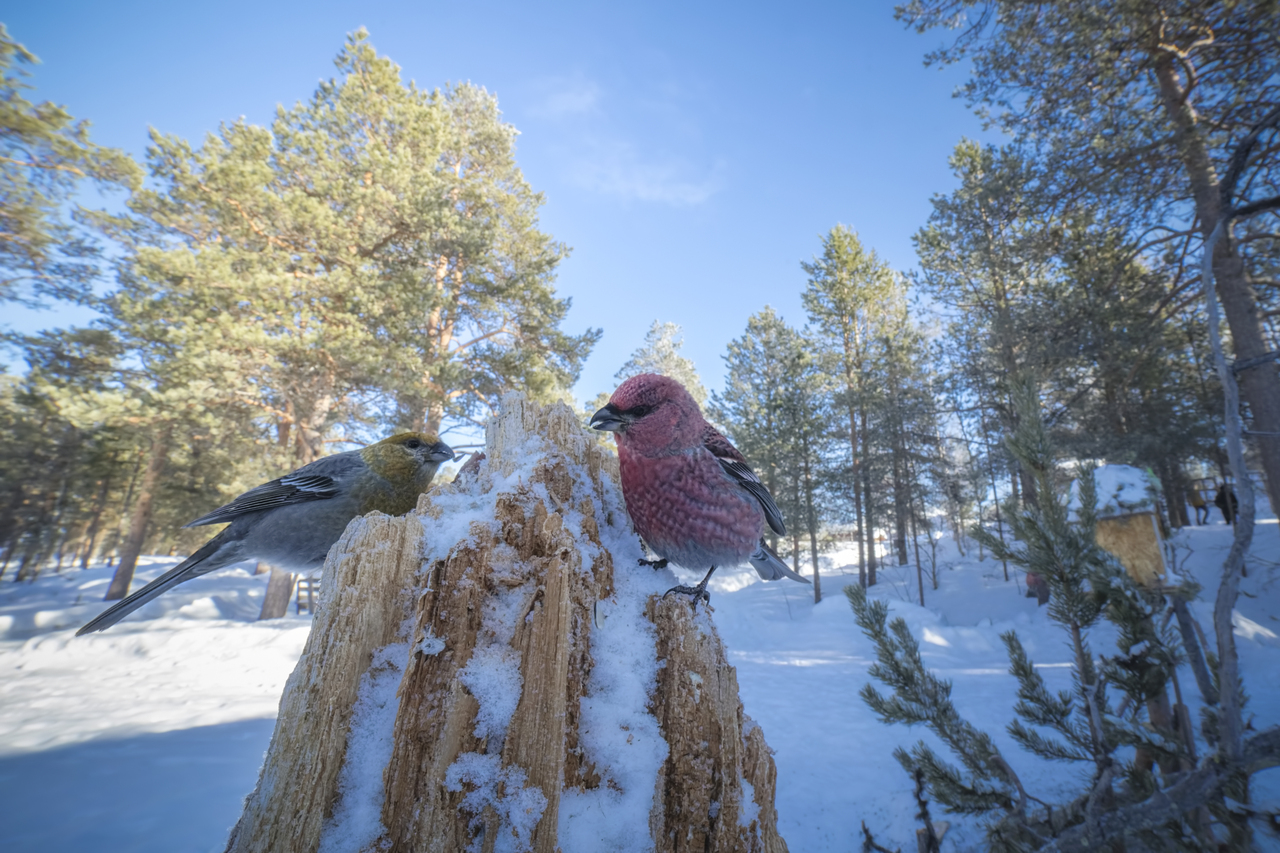
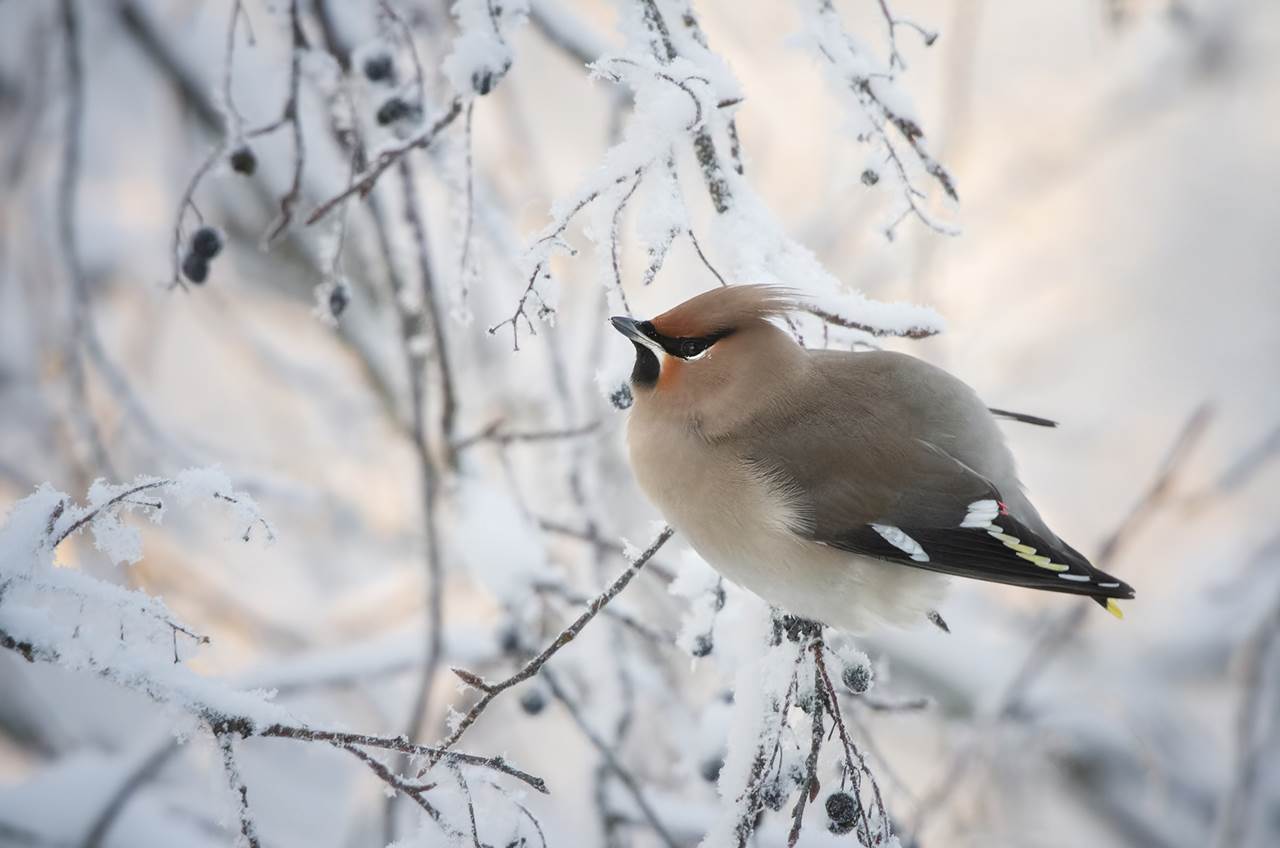
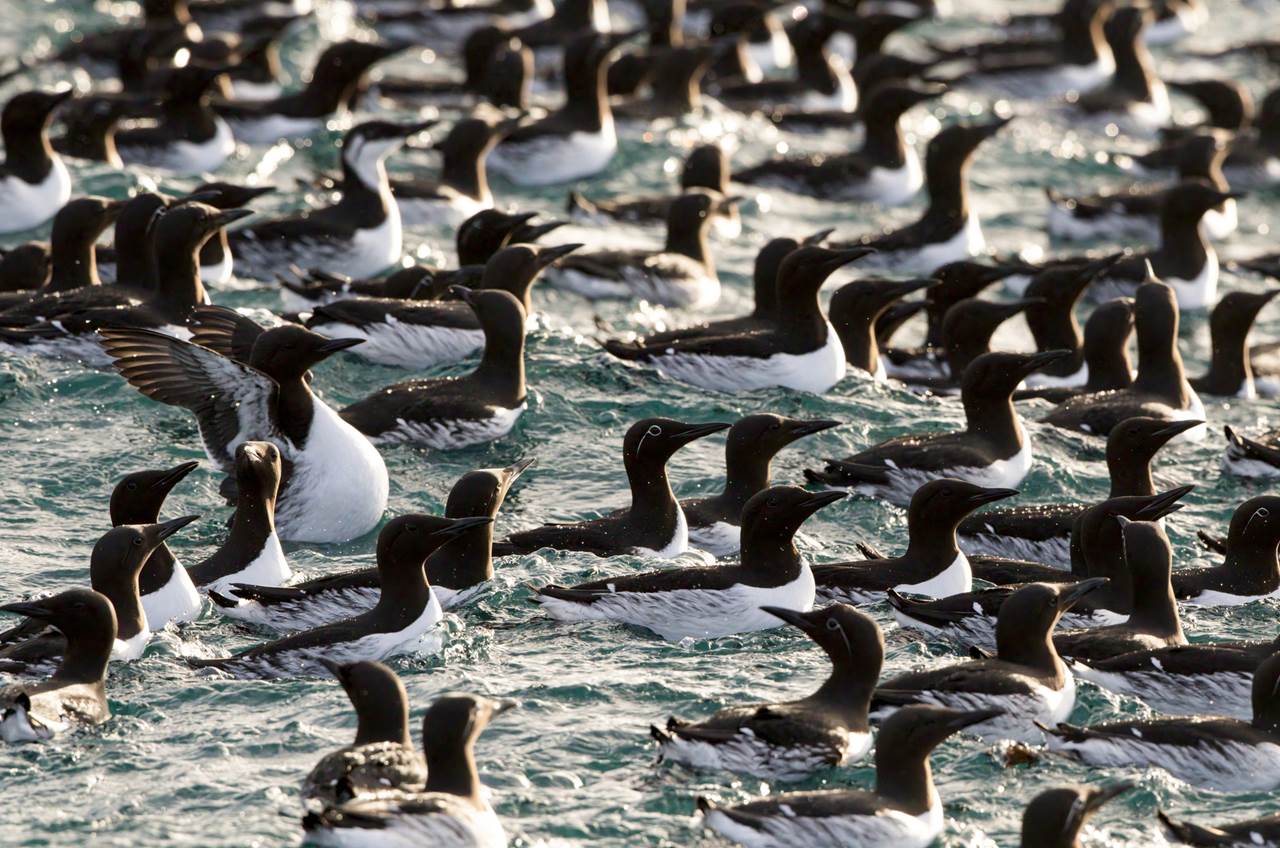
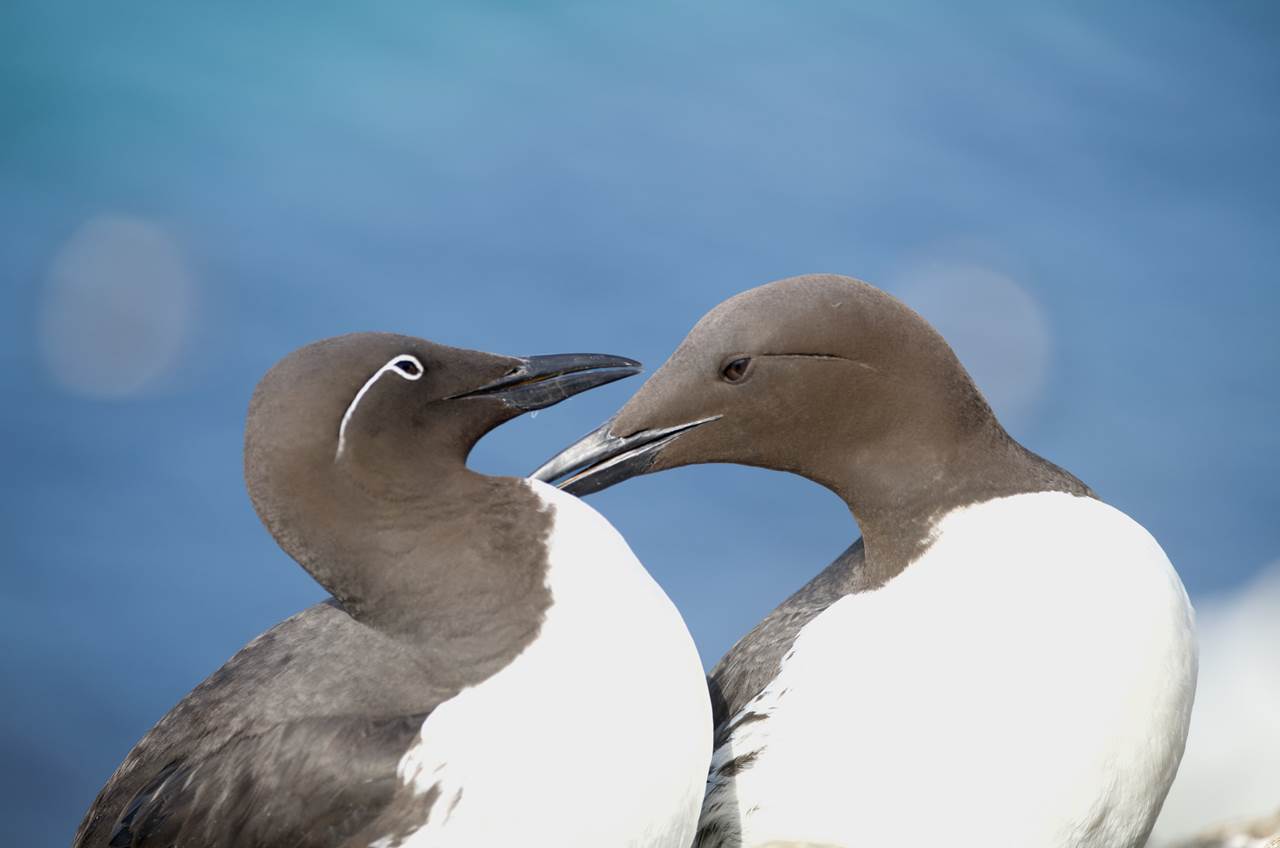
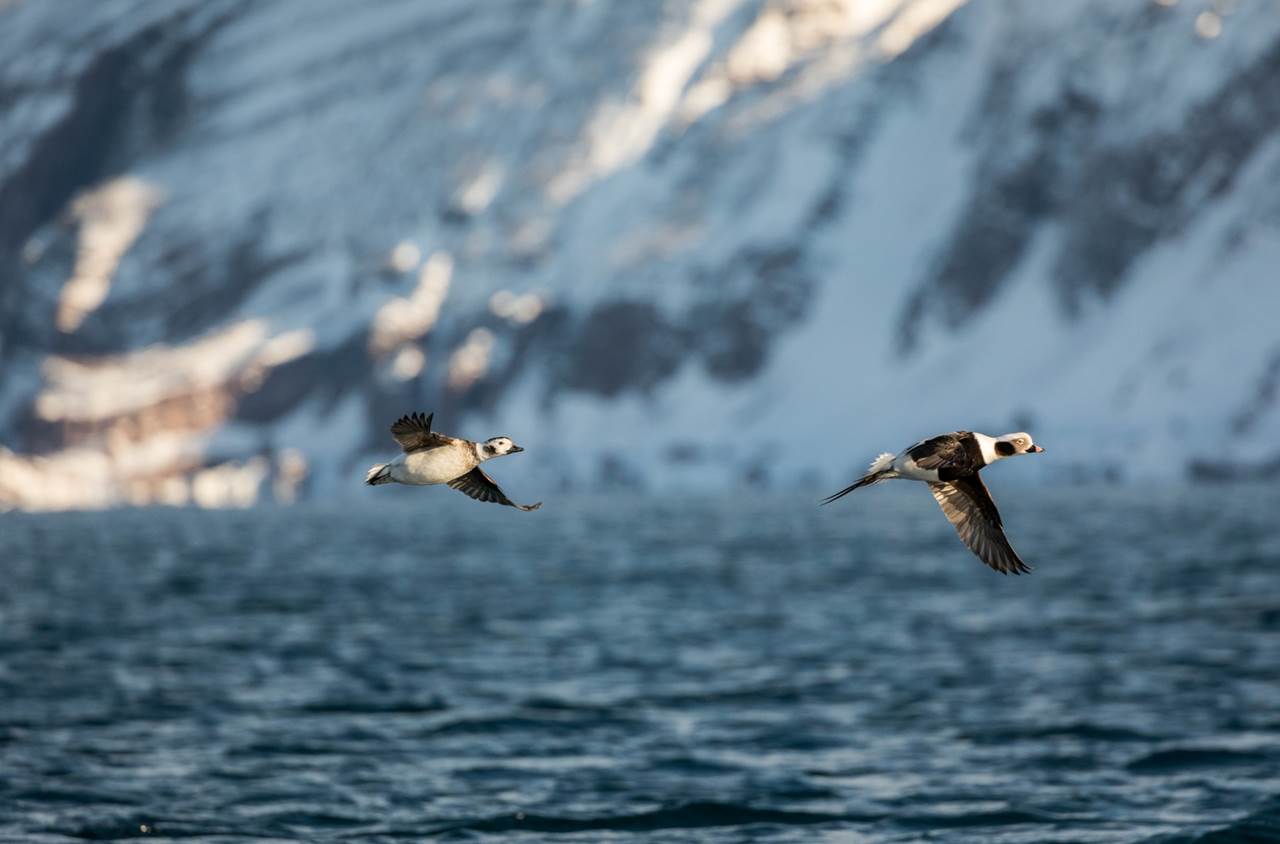
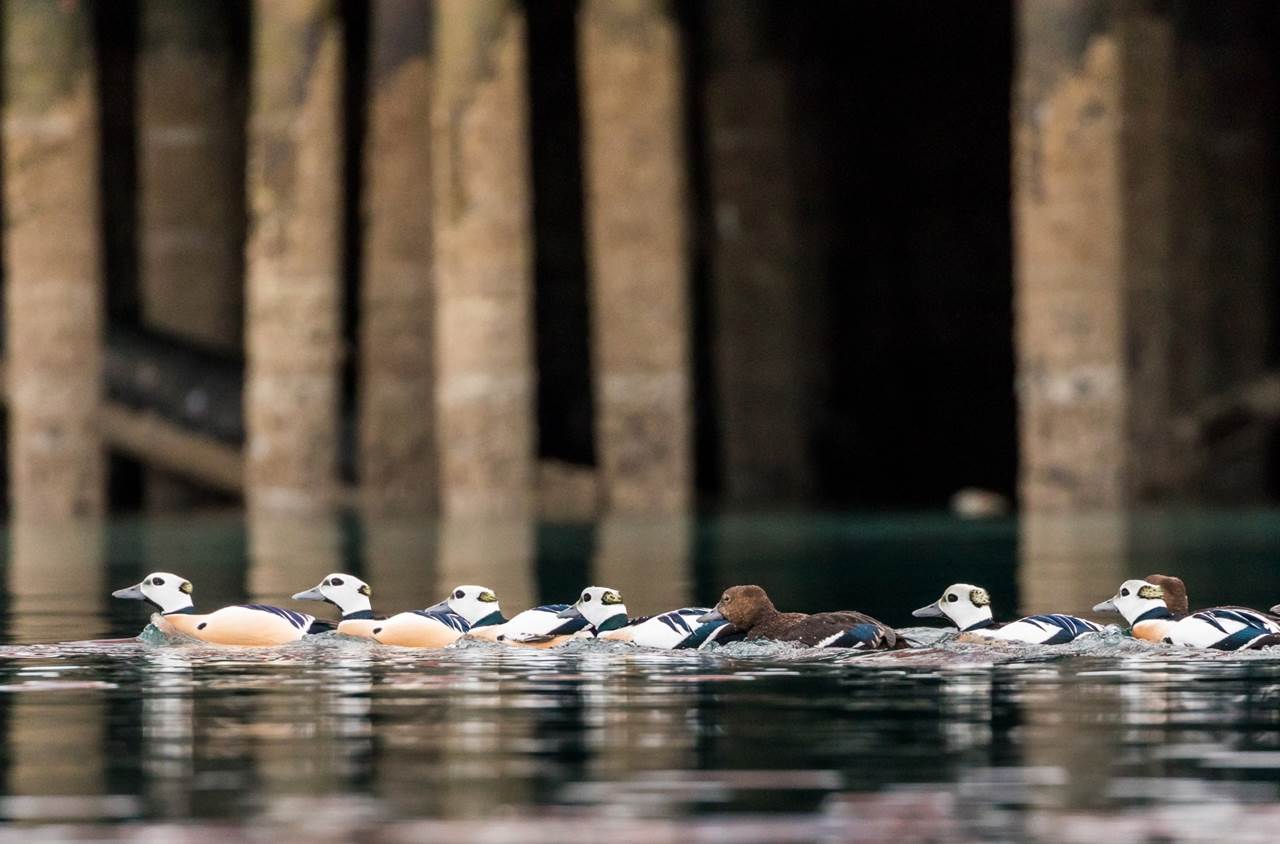
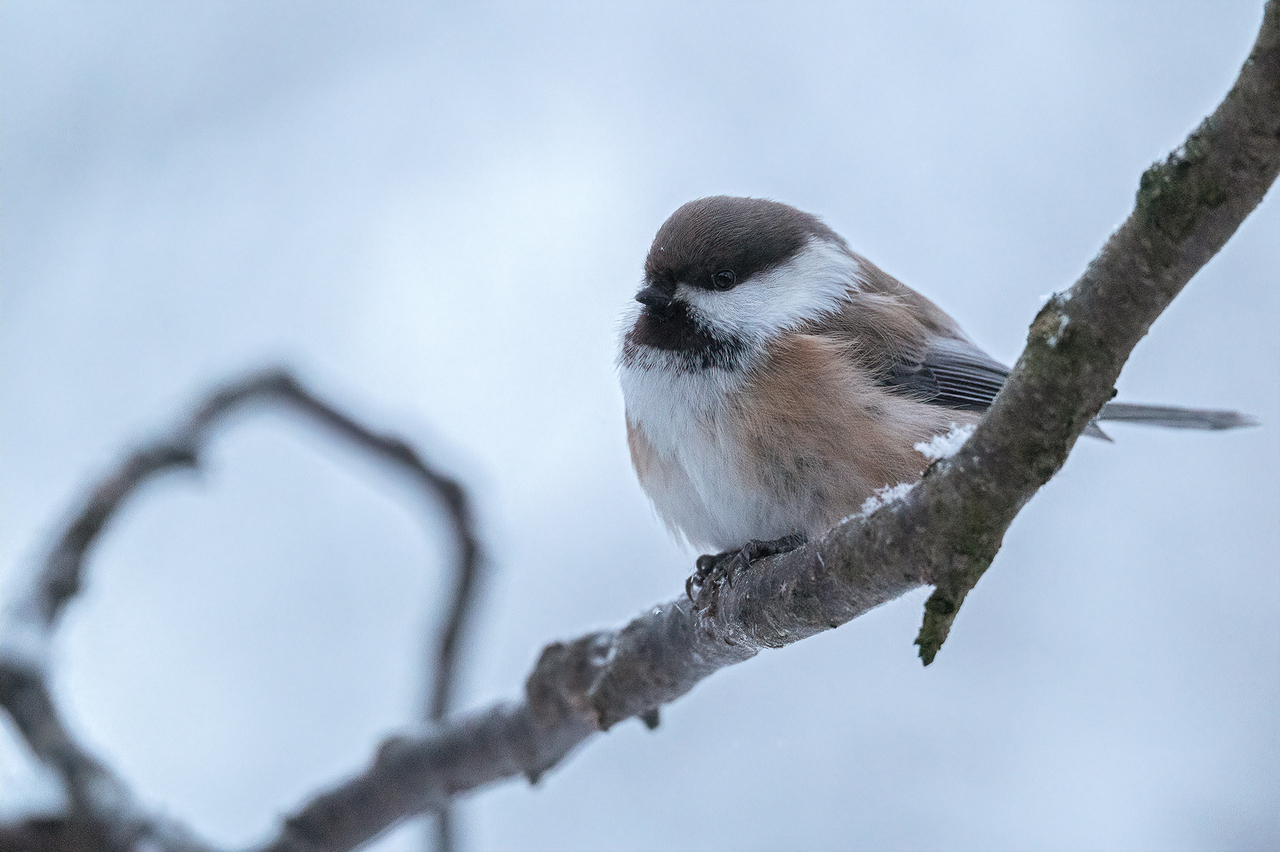
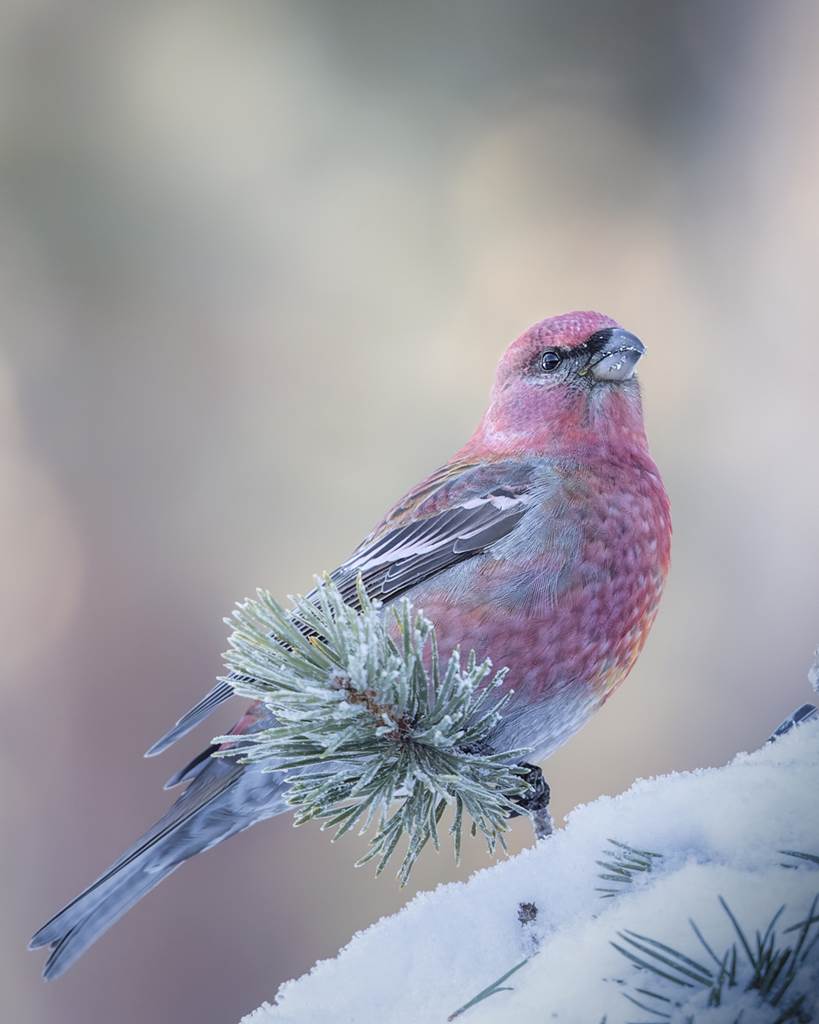
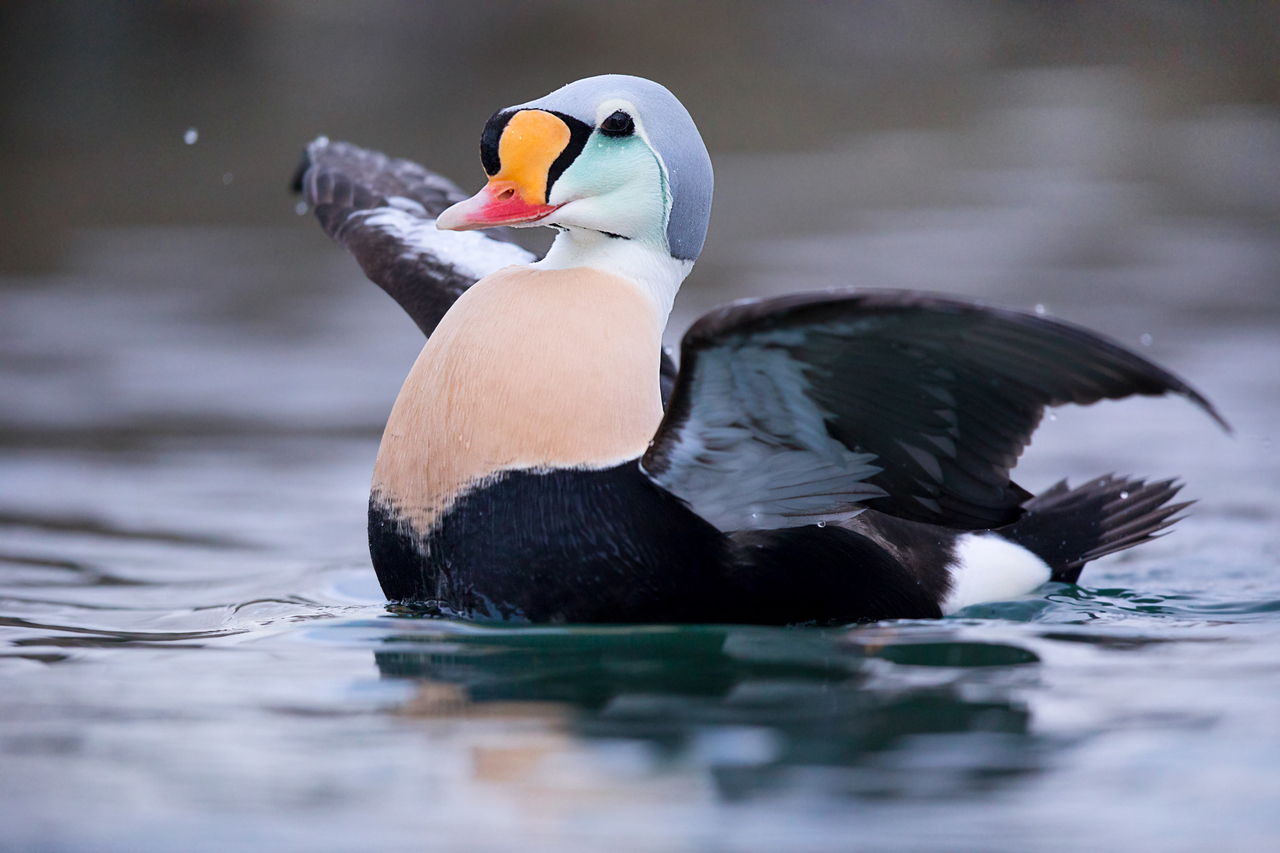
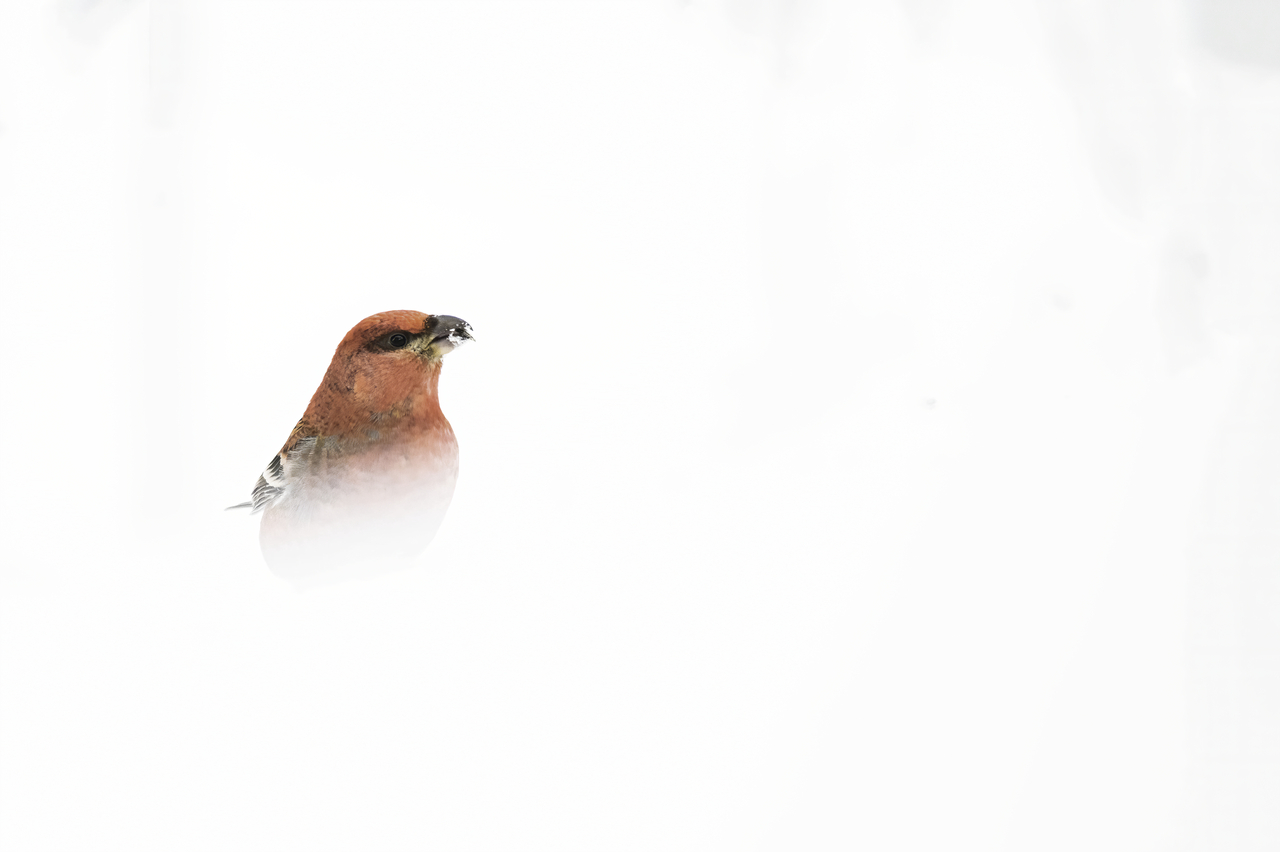
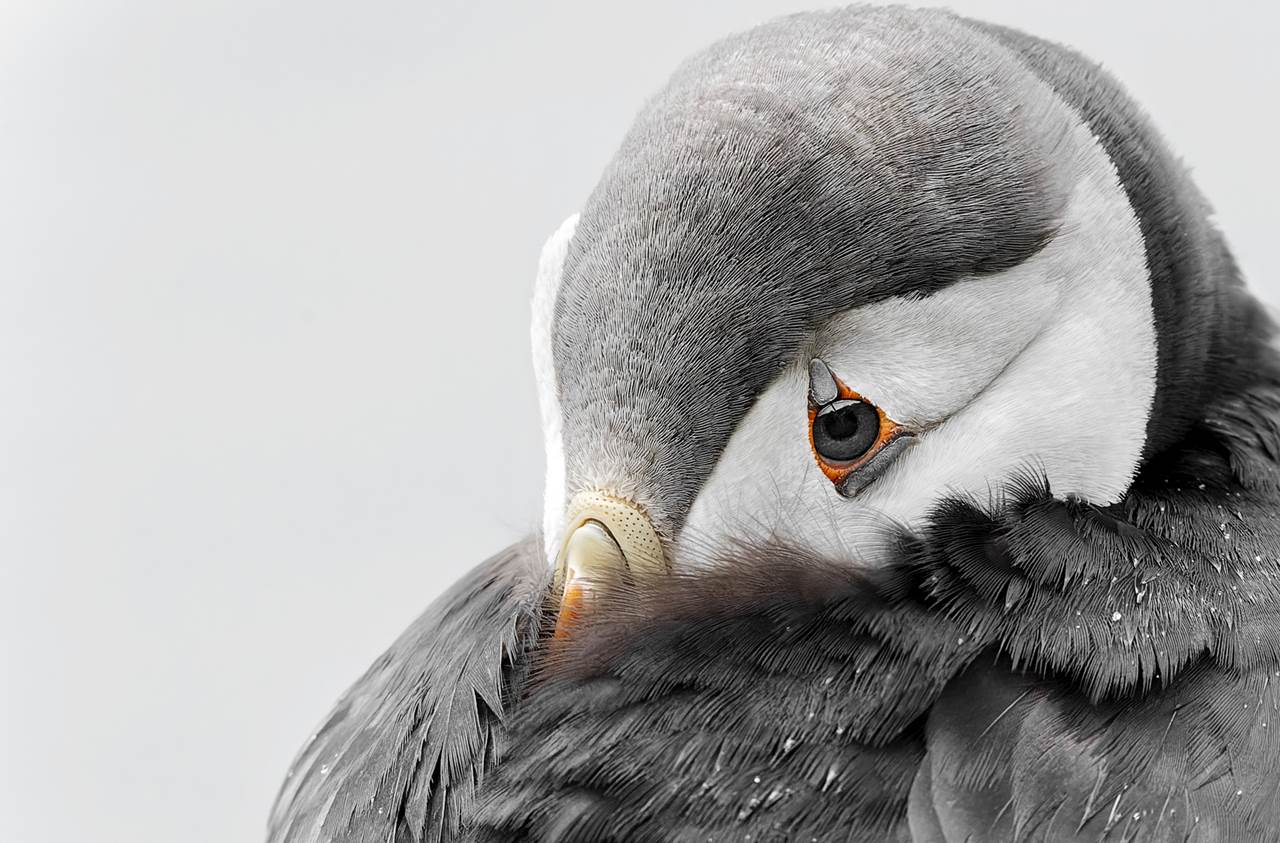
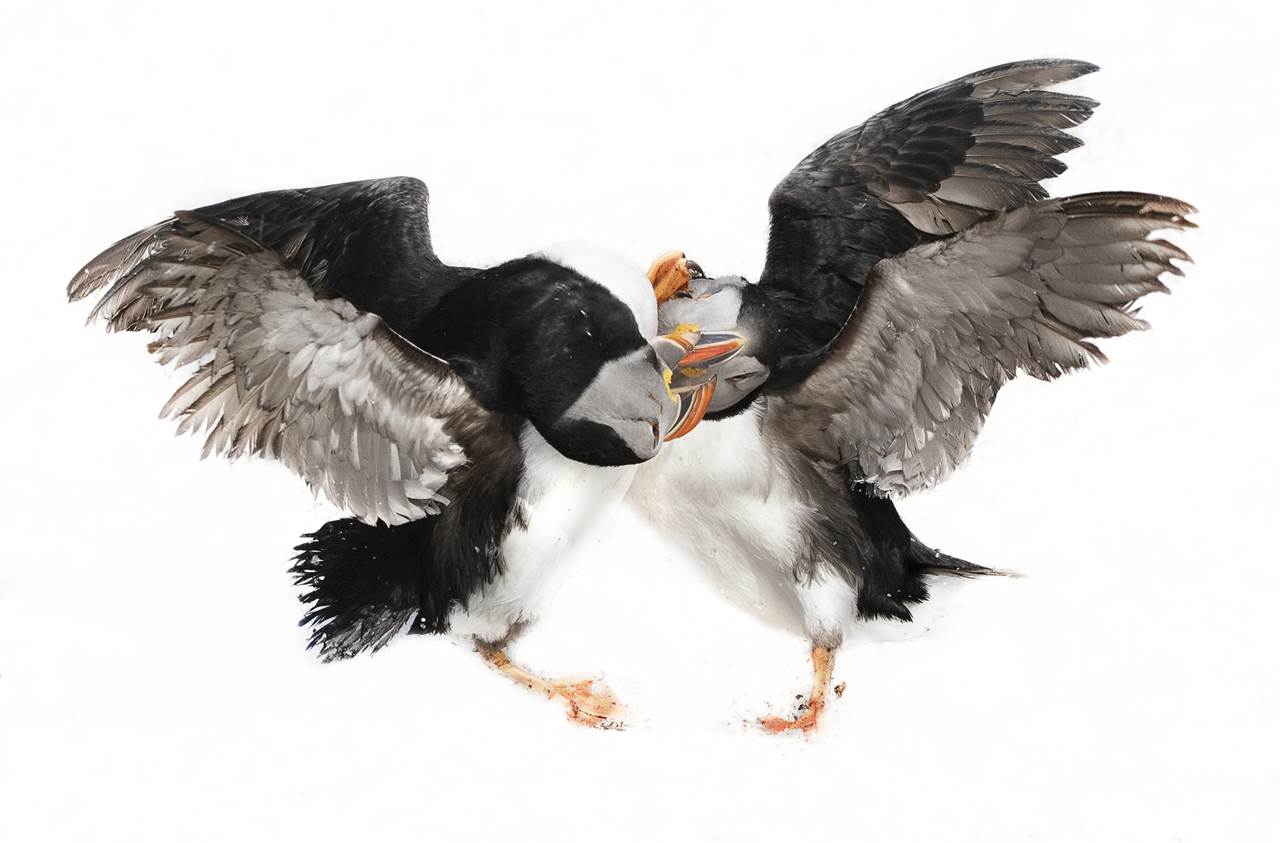
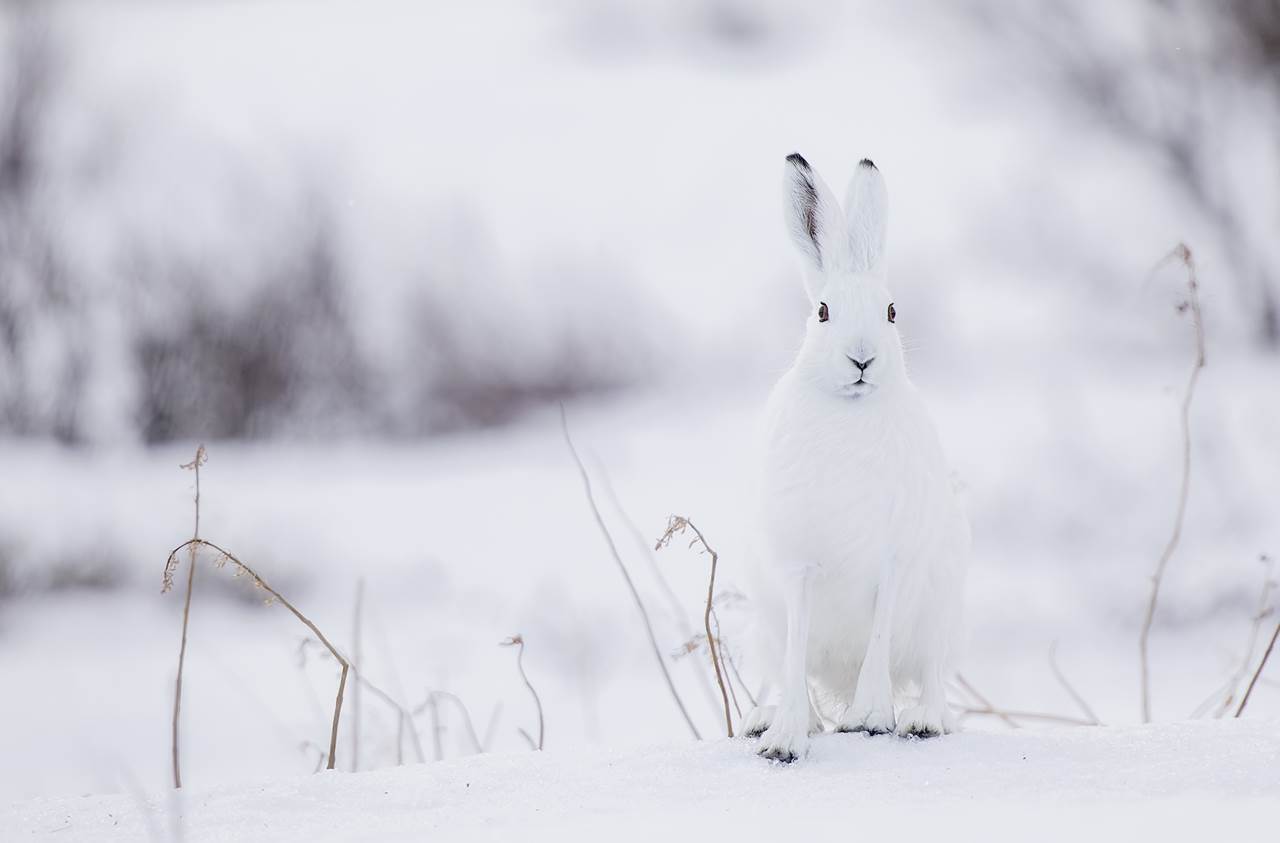
















This is our winter tour in Varanger, a remarkable photographic journey that starts in Lapland’s snow-covered forests, where we search for taiga species such as Pine Grosbeaks, Siberian Jays, and Siberian Tits, before making our way toward the dramatic coasts of the Barents Sea. Here, amid icy shores and majestic cliff formations, we will witness the return of Arctic birds as they prepare for a new breeding season. Steller’s and King Eiders gather in sheltered harbors, White-tailed Eagles soar above the sea, and the first Puffins arrive back to their colonies on Hornøya Island, all set against a landscape still rich in snow, ice, and the shimmering colors of the Northern Lights. Surrounded by thousands of seabirds gradually returning to the cliffs: Brünnich’s Guillemots, Razorbills, Shags, and more. Hornøya becomes a vibrant hub of sound, flight, and color, a true celebration of life in the Barents Sea. During the tour, we will stay for several nights at Kongsfjord Arctic Lodge, a charming nature lodge owned by Skua, offering us warm refuge, breathtaking views, and a comfortable base from which to explore the region’s wildlife and landscapes.
Day 1
Our journey will begin in Ivalo, 250 km north of the Arctic Circle. We will drive into the snowy taiga, a land that will characterize the first part of our adventure. Along the way, we will stop to admire and enjoy the geometries that ice and snow draw in the landscape. With a little luck, we will find the White-throated Dipper and make the first stop in Kaamanen. Siberian Jays, Siberian Tits, Pine Grosbeaks, and Arctic Redpolls frequent the bird feeders installed by the local restaurant. Red squirrels flock to these feeders as well, allowing us to capture stunning images of these acrobats in both pose and action. We will have our first exclusive photo session in a new photographic hide at the restaurant’s base which enables high-resolution portrait photographs in Kaamanen’s winter woodland. After lunch, we will wander around the feeding area and take pictures from different perspectives, this time in complete freedom around the hide, as these birds are very used to people. The evening light will help us to take impressive shots of these birds without disturbing them. In the afternoon we will board our van and head to Northern Norway, where with a little luck we will be greeted by the Northern Lights at the border with Finland. In the evening we will arrive in Kongsfjord, where we will have dinner and spend the first three days of our journey.
Day 2
From our accommodation in Kongsfjord we will drive to the nearby village of Berlevåg, the northernmost town on the Norwegian mainland. The road winds through three small fjords where snow and ice stalactites cover the jagged rocks and cliffs of the Barents Sea. The glacial valleys formed millions of years ago, are now home to White-tailed Eagles, Moose and herds of Reindeer. We reach Berlevåg harbour to allow us to photograph species such as Steller’s Eider, King Eider, Common Eider, and Long-tailed Duck, as well as Grey Seals attempting to prey on birds in the harbour. We will also look for several gull species in this area, as individuals of thea are common. To get the most out of photography, we will have a first picture session till noon and then a packed lunch. After lunch, we will go for a walk to the various docks to photograph seabirds from different angles.There will be also the opportunity to photograph the birds while the lights of the pier are reflected in the water, adding new colours to your pictures. In the evening we will return to Kongsfjord.
Day 3
Before sunrise, we will drive east on a scenic road where we have the opportunity to photograph herds of Reindeer, Moose and Rock Ptarmigans. Once arrived in Båtsfjord, we will have another photo session from the harbour, this time focused on King Eider, Common Eider, Steller’s Eider, and Long-tailed Duck. The colourful residences in the neighbourhood contribute hues to the harbour’s water, generating warm reflections that accentuate the seabirds’ white plumage. We will have lunch in a nearby restaurant to warm up and recharge our batteries before starting a new photography adventure in the afternoon: we will search for the same species, but this time we will cruise around the Barents Sea shoreline. We will be able to capture seabirds in vast groups, in flight, and even up close, from every angle. On our drive back to Kongsfjord in the afternoon, we'll pass through the snowy mountains of northern Norway, which provide exceptional prospects for landscape photography. Once arrived, we can take a leisurely walk along the beach with our cameras in hand to capture small groups of Purple Sandpipers.
Day 4
Early in the morning we will drive down the north shore of Varangerfjord to the settlement of Vardø, which is located on an island connected to the mainland by an underwater tunnel. We will go through a variety of unspoiled scenery along the cliffs of Varangerfjord, which border the vast river, Tana. Here we can picture the majestic White-tailed Eagle and, hopefully, the Bohemian Waxwing. We will pay close attention to the surrounding vegetation of the tundra area before Tana, as a pair of Northern Hawk Owls has been observed throughout winter and is pretty easy to photograph. When we reach Vardø, where we will spend two nights, we will unpack and have lunch before beginning another adventure at sea. This time, we will take a one-hour boat around the island of Hornøya. More than 100,000 seabirds live on the island. Puffins, Common Guillemot, Brunnich's Guillemots, Razorbills, Black-legged Kittiwakes, and European Shags may all be photographed here. Small bays at its bottom, where the sea and mountains meet, serve as gathering and resting areas for many seabirds, Grey Seals, and Harbour Seals, which we will try to locate from our boat. We'll walk ashore on the island with the final lights of sunset to explore the land and its people. This is a once-in-a-lifetime opportunity to experiment with high-key photography while also taking advantage of the first migratory birds to land on the island. This quick trip to Hornya will help us decide the photos we’d like to take the next day when we will have complete freedom and time. We will return to our Vardø lodging for dinner before setting out to discover new locations to capture the Northern Lights.
Day 5
We will board early in the morning to capture great flocks of eiders that congregate in the coastal waters of Hornøya. We will go on a two-hour boat ride to spot Common Guillemot, Brunich's Guillemot, Puffins, and European Shags up close. We will be able to photograph these seabirds in flight and swimming in the open sea during this sea expedition. We may also see cetaceans such as rorquals and porpoises if we are lucky. We will disembark around noon on the island of Hornøya, where we will have plenty of time to explore the surroundings and take the photos we choose. You will have the opportunity to photograph the couples’ courtship rituals, such as the gift exchange or the battle over the territory of the many seabird species, as they are surrounded by snow. We will cruise around this Barents Sea beauty until the afternoon so that you will enjoy your packed lunch. We will return to Vardø in the evening to spend the night and pack our belongings before leaving the village the next day to begin our journey to Finland.
Day 6
We will visit the Ekkerøy cliffs at dawn, where a huge amount of Black-legged Kittiwakes create a big colony on a wall above the sea. When it snows, the snowflakes make an excellent backdrop for shots of these birds in flight. We will also visit Vadsø harbour to look for Common Eider and Steller’s Eider. Most significantly, we will seek the Mountain Hare, which is concealed in the icy tundra with its white fur, giving us exceptional photo chances. After lunch, we will start the descent to the restaurant in Kaamanen, where we will eat dinner and spend the night. Along the journey, we will be on the lookout for species like Reindeer and Moose, as well as the gorgeous route’s opportunities for landscape photography. If the light is favourable, we could do another photo shoot of the forest birds near the restaurant. we will spend the evening going on the last night-time search for the Northern Lights, this time in the immense Finnish woodlands.
Day 7
We will leave early in the morning for Ivalo, hoping to see the last herds of Reindeer in the Finnish taiga and, perhaps, a few photos of the White-throated Dipper on the freezing rivers around Ivalo. We will arrive at the airport before midday, say our goodbyes, and prepare for our next trip together.
Please be advised that the itinerary is subject to change at the discretion of our Skua guides based on their experience, observations, and logistical considerations. We strive to provide the best possible experience, and adjustments may be made to ensure your safety and enjoyment throughout the journey.
Ivalo - Kaamanen - Kongsfjord - Berlevag - Batsfjord - Tana Bru - Ekkeroy - Vardo - Hornoya - Vadso - Ivalo
Bring:
Participants: min 4 - max 8
Languages: English, Spanish, Italian
Important information:
Ivalo Airport
Target Species: King Eider, Common Eider, Steller’s Eider, Long-tailed Duck, Brunnich’s Guillemot, Common Guillemot, Razorbill, Puffin, Black-legged Kittiwake, Purple Sandpiper, Rock Ptarmigan, Mountain Hare, White-tailed Eagle, Northern Hawk Owl, Pine Grosbeak, Siberian Jay, Siberian Tit, Arctic Redpoll, Moose and Reindeer
Best date: 21 march
Single room charge 400 € on request